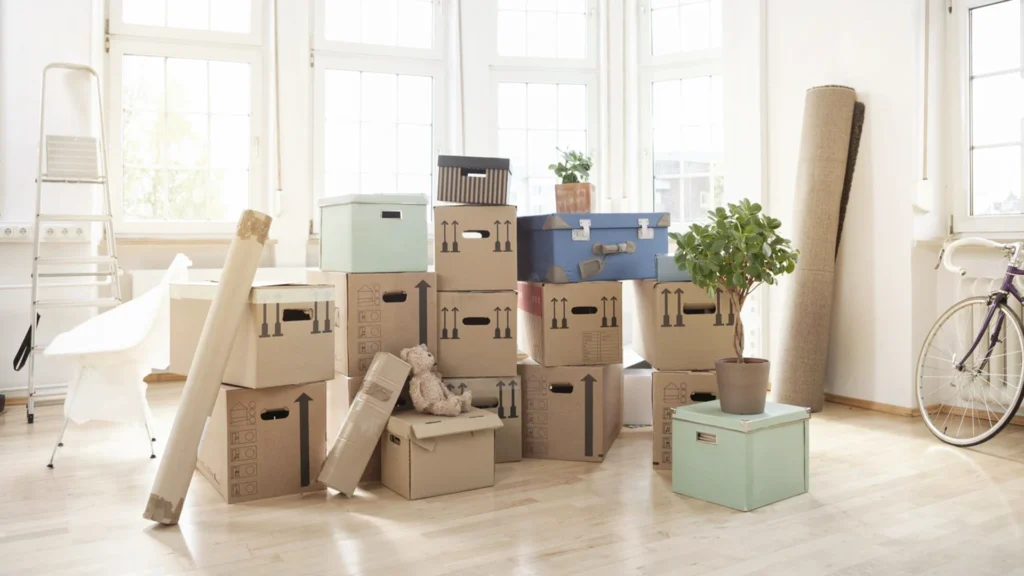Packing up your home and preparing for a big move can feel like an overwhelming task, especially when time is of the essence. Whether you’ve just accepted an offer on your house or need to relocate urgently, the process often comes with a mix of excitement and stress. But don’t worry – we’ve got you covered!
This guide will walk you through how to pack and move house like a pro, breaking the process into manageable steps. From smart planning to efficient packing tips, you’ll have all the tools to make your next move seamless and stress-free.
Planning Your Move
Moving house can feel like an endless checklist, but a little planning can save you from unnecessary stress.
Here’s how to get started:
1. Book Early to Avoid Last-Minute Stress
One of the first things you should do when planning a move is to secure the help you need. Whether you’re hiring professional movers or renting a van, booking early ensures you’re not left scrambling at the last minute. Moving companies get especially busy during weekends and month-ends, so plan ahead to secure your preferred date and avoid inflated prices.
If you’re moving during a high-demand season (spring or summer), aim to book at least a month in advance. This will give you peace of mind and plenty of time to coordinate other aspects of your move.
2. Create a Moving Timeline
A detailed timeline keeps you organised and prevents you from feeling overwhelmed.
Break the process into manageable tasks:
- 6-8 Weeks Before the Move: Start decluttering and researching moving services.
- 4-6 Weeks Before: Begin packing non-essentials, notify utility providers, and change your address.
- 2-3 Weeks Before: Confirm bookings, pack room by room, and finalise legal documents.
- Moving Week: Pack essentials, clean the property, and ensure everything is ready for moving day.
Having a clear plan not only keeps you on track but also reduces the risk of forgetting something important.
3. Assess Your Belongings: Keep, Donate, or Discard
Moving is the perfect opportunity to declutter. Before you start packing, go through every room and decide what to keep, donate, or discard:
- Keep: Items you use regularly or have sentimental value.
- Donate: Clothes, furniture, or appliances in good condition that you no longer need.
- Discard: Broken, outdated, or unused items that don’t add value to your life.
By trimming down your belongings, you’ll save on packing materials and transportation costs. And it feels great to start fresh in your new home with only what you truly need.
Choosing the Right Packing Materials
Using the right packing materials can make all the difference in protecting your belongings during the move.
Here’s how to choose the right materials:
1. Types of Boxes and Their Uses
Using the right box for the right items can prevent damage and make your move more efficient:
- Small Boxes: Ideal for heavy items like books, canned goods, and small kitchen appliances.
- Medium Boxes: Perfect for toys, shoes, and general household items.
- Large Boxes: Use these for lightweight, bulky items like bedding, duvets, and pillows.
- Specialty Boxes: Consider wardrobe boxes for hanging clothes, dish boxes for fragile glassware, and electronics boxes for gadgets.
2. Creative Packing Containers
Don’t overlook the containers you already own. Suitcases, duffle bags, and reusable shopping bags can double as packing solutions.
For example:
- Use suitcases for clothes or books.
- Pack fragile items in storage bins for extra protection.
- Use laundry baskets to transport lightweight, everyday items.
3. Essential Packing Supplies
Stock up on these essentials to make the packing process smoother:
- Bubble Wrap: Wrap breakable items like plates, glasses, and vases to protect them during the move.
- Packing Tape: Go for strong, high-quality tape to keep your boxes sealed securely.
- Markers and Labels: Label boxes clearly with their contents and destination room.
- Protective Padding: Old blankets, towels, or foam sheets can cushion furniture or fragile items.
Having these supplies on hand ensures you can pack efficiently and safely.
Planning a move? Download our free UK moving home checklist to stay organised from start to finish.
How to Pack for Shifting House
Packing doesn’t have to be a headache. Follow these steps for a more efficient process:
1. Start with Non-Essentials
Begin by packing items you won’t need before moving day.
These might include:
- Seasonal clothing (e.g., winter coats in summer).
- Books, DVDs, and decorative items.
- Guest bedding and kitchenware you don’t use daily.
This clears space and allows you to focus on essentials as moving day approaches.
2. Protect Fragile Items
Handle delicate belongings with care:
- Plates and Glassware: Wrap individually with bubble wrap or newspaper. Stand plates on their sides in boxes for better protection.
- Electronics: Use original packaging if available, or wrap devices in bubble wrap and place them in sturdy boxes.
- Mirrors and Artwork: Protect corners with foam, and cover surfaces with blankets or cardboard sheets.
Always label boxes with fragile items clearly and load them securely to avoid damage.
3. Measure Large Furniture and Doorways
Before moving bulky items like sofas, wardrobes, or dining tables, measure their dimensions and compare them with doorways and staircases in your new home. This helps you avoid unnecessary frustration on moving day. If something won’t fit, disassemble it in advance.
Labelling and Organising
Proper organisation makes unpacking at your new home faster and less stressful.
1. Label Boxes Clearly
A clear labelling system helps you identify what’s in each box without opening it. Write:
- The contents (e.g., “Kitchen: Pots and Pans”).
- The destination room (e.g., “Living Room”).
- Handling instructions, if needed (e.g., “Fragile” or “This Side Up”).
2. Colour-Code Boxes
Take labelling a step further by using colour-coded stickers or tape for each room:
- Red for the kitchen.
- Blue for the bedroom.
- Yellow for the bathroom.
Colour coding makes it easy for movers to place boxes in the right rooms
3. Keep an Inventory
Create a simple inventory list as you pack. For example:
- Box 1: Kitchen utensils and cutlery.
- Box 2: Living room books and candles.
This ensures nothing gets lost in transit and makes unpacking more efficient.
Conclusion
Moving house quickly doesn’t have to be a chaotic experience. With a little planning, the right materials, and an organised approach, you can make the process much smoother.
If selling your house quickly is part of your moving journey, Zapperty is here to help. We offer cash offers within 60 minutes and can complete sales in as little as seven days, saving you time and stress.
Ready to get started? Contact Zapperty today and let us take the hassle out of your house sale, so you can make your next move with confidence!







